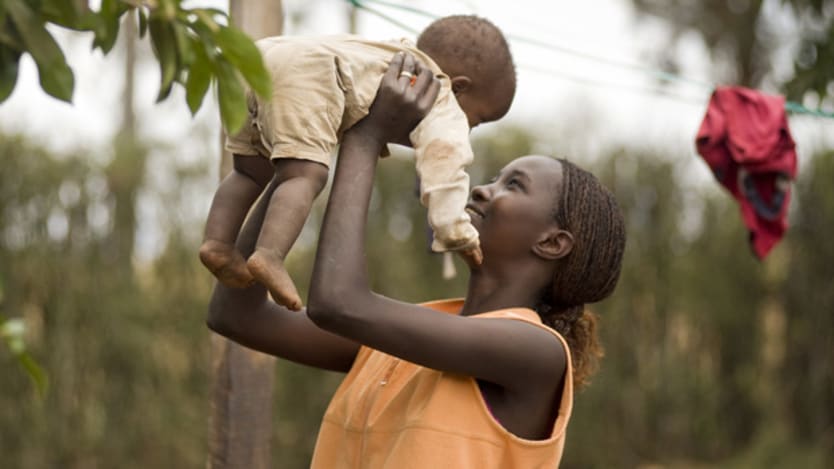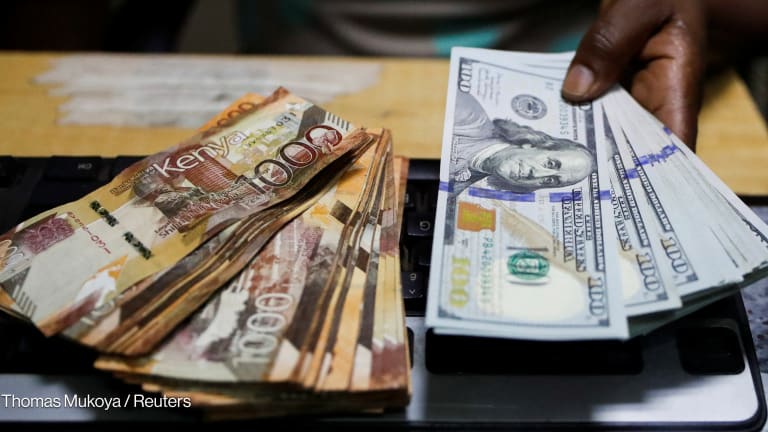
One of most important contributions of the Millennium Development Goals to global development is uniting partners around a common agenda. For women’s and children’s health, progress has been fueled by a partnership comprising more than 300 stakeholders, including 70 governments, led by U.N. Secretary-General Ban Ki-moon.
The partnership seeks to advance the Global Strategy for Women’s and Children’s Health, a road map on how to enhance financing, strengthen policy and improve service delivery on the ground for the most vulnerable women and children. This movement of partners called Every Woman Every Child aims to mobilize and intensify global action on the health MDGs, saving and improving the lives of women and children around the world.
The good news is that thanks in part to the unifying force of the MDGs, women’s and children’s health and survival rates around the world are steadily improving. Since 1990, maternal and child mortality rates have both been reduced 50 percent and contraceptive prevalence increased from 55 percent to 63 percent. New HIV infections have dropped 38 percent since 2001 and AIDS-related deaths have fallen 35 percent since it peaked in 2005.
These results prove that through Every Woman Every Child, innovative partnerships, as well as private sector and civil society commitments alongside governments, are delivering lifesaving solutions to millions who need it most.
An example of such a commitment is through the U.N. Foundation. In 2010, we committed (with our partners) $400 million over five years in support of the Global Strategy for Women and Children’s Health. Through campaigns and partnerships, UNF’s commitment has helped the United Nations address key global health priorities, including childhood immunizations, malaria prevention, holistic health for adolescent girls, access to reproductive health supplies and services, clean cookstoves, and improving maternal and other health outcomes through mobile technologies. UNF and Every Woman Every Child partners have learned that the elements of a successful partnership include support for country-led health plans, including through increased and sustained investment by partners.
But Every Woman Every Child partners know that in the remaining 500 days of the MDGs there is still much more to do. Many women, newborns and children continue to die from largely preventable causes.
The statistics are stark and represent the hardest to reach women and children: 289,000 women die in childbirth and 6.6 million children do not live to see their fifth birthday, including nearly 3 million newborns who fail to survive the first month of life. There are more than 220 million women in developing countries who don’t want to get pregnant but lack access to the family planning information, services and supplies they need. This inequity must be addressed by integrating the social determinants of health within the post-2015 agenda. Also, we must accelerate the pace of implementation and focus on the innovations and potential game changers through common strategies that will help us reach some of the most vulnerable women and children.
For instance, cost-effective solutions to prevent prematurity, childbirth complications and newborn infections can protect women and children from the most dangerous day of their lives — the day of birth. The recently launched Newborn Action Plan aims to save more than 3 million babies and their mothers every year by investing in quality care at the time of birth.
The recently released report, “Countdown to 2015: Fulfilling the Health Agenda for Women and Children,” shows that of the 75 countries covered in the report (which account for more than 95 percent of all maternal and child deaths each year), fewer than half will achieve MDG4 on child health. Nearly half of all child deaths are attributable to undernutrition. Preventable and treatable infectious diseases such as pneumonia and diarrhea remain the leading cause of child deaths.
The report also shows that half of countries in the report still have high maternal mortality rates, and 16 countries — all of them in Africa — still have a maternal mortality rate of 500 or more deaths per 100,000 live births. Severe health workforce shortages limit countries’ ability to provide high-quality care to women and children.
The recent UNAIDS Gap Report indicates that in 2013, around 12.9 million people living with HIV had access to antiretroviral therapy. Unfortunately, this represents only 38 percent of all adults and 24 percent of all children living with HIV.
Investing in targeted interventions will only get us part of the way. We need a data revolution in order to adequately track our progress, resources and results. One example is that 51 countries have now conducted an assessment of their civil registration and vital statistics systems. Of these, 25 countries also have a multisectoral plan and high-level steering committee and several have developed long-term investment plans. We need to support the political momentum for CRVS that is growing in many countries to get better information for better results.
Gains made toward the MDGs prove that we go further together. We can accelerate action on existing commitments by governments, civil society organizations and the private sector. Through a new advocacy platform called #Commit2Deliver, our partners are seeking to promote a laser-like focus on accountability for resources and results. You can find out more about this effort by visiting the campaign’s website.
The third progress report on accountability for women’s and children’s health concludes that accountability and transparency are recognized by countries and donors alike as critical partnership elements for reaching the health MDGs. By promoting results and strengthening transparency, we will prove why issues affecting the lives of women’s and children’s health must remain at the top of the development agenda through 2015 and beyond.
Aug. 18, 2014, marks the 500-day milestone until the target date to achieve the Millennium Development Goals. Join Devex, in partnership with the United Nations Foundation, to raise awareness of the progress made through the MDGs and to rally to continue the momentum. Check out our Storify page and tweet us using #MDGmomentum.








